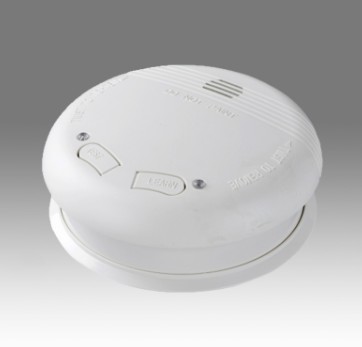Selecting a high-quality wireless online smoke alarm is […]
Selecting a high-quality wireless online smoke alarm is a critical decision for ensuring the safety of your home and its occupants. The features to look for in such a device span a range of considerations aimed at providing reliable detection, connectivity, and ease of use.
First and foremost, wireless connectivity is a key feature to ensure that the smoke alarm can communicate seamlessly with other devices and platforms in your home. A robust and reliable wireless protocol, such as Wi-Fi, allows for real-time transmission of alerts to connected devices, providing timely information about potential fire hazards.
Mobile app compatibility is essential for remote monitoring and control. A user-friendly mobile app facilitates easy setup, monitoring, and management of the smoke alarm from your smartphone or tablet. Intuitive interfaces and additional features like remote notifications contribute to the overall user experience.
Interconnectivity is a key safety feature. Smoke alarms that can communicate wirelessly with each other create an interconnected system where, if one alarm detects smoke, all connected alarms sound simultaneously. This ensures comprehensive coverage throughout the home, providing early warning to occupants in different areas.
 Advanced sensor technology is crucial for effective smoke detection. A combination of photoelectric and ionization sensors offers a dual-sensor approach, enhancing the alarm's ability to detect different types of fires, from smoldering to fast-flaming ones. Some advanced smoke alarms also include carbon monoxide detection capabilities, addressing another potential threat to home safety.
Advanced sensor technology is crucial for effective smoke detection. A combination of photoelectric and ionization sensors offers a dual-sensor approach, enhancing the alarm's ability to detect different types of fires, from smoldering to fast-flaming ones. Some advanced smoke alarms also include carbon monoxide detection capabilities, addressing another potential threat to home safety.
Audible voice alerts contribute to user understanding during emergencies. Clear and specific voice alerts provide information about the type and location of the detected hazard, helping occupants take appropriate action in a timely manner.
Reliable power sources are critical for continuous operation. Look for smoke alarms with long-lasting batteries or backup power sources to ensure functionality, even during power outages. Battery backup is especially crucial in maintaining the alarm's effectiveness when external power sources are compromised.
Self-monitoring features and regular self-tests enhance the reliability of the smoke alarm. These features ensure that the sensors and connectivity are functioning correctly, reducing the risk of false alarms and providing confidence in the device's performance.
An event history log adds another layer of information for users. Being able to review past alerts can be valuable for troubleshooting, understanding the frequency and nature of events, and sharing information with emergency responders if necessary.
Ease of installation is a practical consideration. Whether the smoke alarm is hardwired or battery-powered, a simple installation process with clear instructions and user-friendly mounting mechanisms contributes to a hassle-free setup.
Finally, certifications and standards compliance are essential. Ensuring that the smoke alarm meets recognized safety standards and certifications in your region provides assurance that the device has undergone rigorous testing and adheres to established safety and performance criteria.
A high-quality wireless online smoke alarm should encompass these features to provide a comprehensive and effective solution for early fire detection and enhanced home safety. By considering these factors, you can make an informed decision and prioritize the well-being of your household.